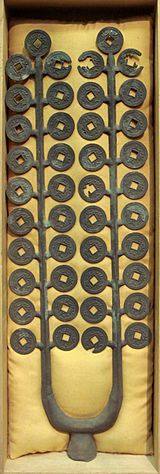Kaei facts for kids
Kaei (嘉永) was a Japanese era name (年号,, nengō,, lit. "year name") after Kōka and before Ansei. This period started in February 1848 and ended in November 1854. During this time, the emperor was Kōmei-tennō (孝明天皇).
The nengō Kaei means "Celebration of Eternity" or "Eternal Felicity"
Events of the Kaei Era
- 1849 (Kaei 2): Medical practice of vaccination first used by Dutch physician at Dejima.
- July 1853 (Kaei 6): Commodore Matthew Perry and the United States Navy anchor off Uraga at the mouth of Tokyo Bay.
- 1854 (Kaei 7): Commodore Perry returns to Edo Bay to force Japanese agreement to the Treaty of Kanagawa. The chief Japanese negotiator was Hayashi Akira.
- 2 May 1854 (Kaei 7, the 6th day of the 4th month): Fire destroyed the Imperial Palace in Kyoto.
During the Kaei era, the shogunate bought guns and encouraged the manufacture of guns.
Related pages
- National Diet Library, "The Japanese Calendar" -- historical overview plus illustrative images from library's collection
| Kaei | 1st | 2nd | 3rd | 4th | 5th | 6th | 7th |
|---|---|---|---|---|---|---|---|
| 1848 | 1849 | 1850 | 1851 | 1852 | 1853 | 1854 |
| Preceded by: Kōka |
Era or nengō: Kaei |
Succeeded by: Ansei |

All content from Kiddle encyclopedia articles (including the article images and facts) can be freely used under Attribution-ShareAlike license, unless stated otherwise. Cite this article:
Kaei Facts for Kids. Kiddle Encyclopedia.

